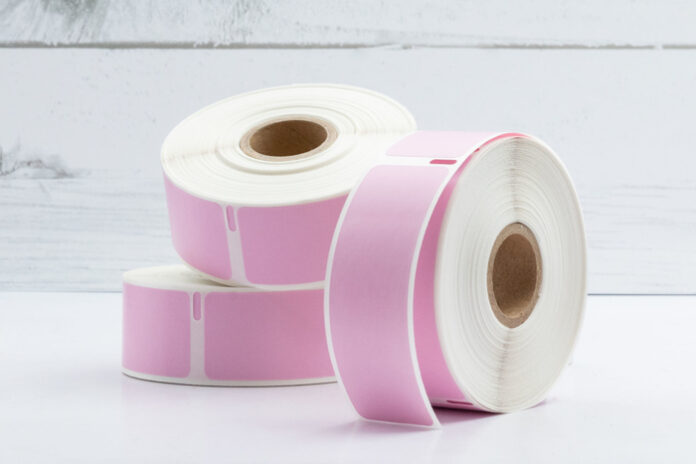As the global awareness around environmental sustainability continues to rise, industries are increasingly being called to reevaluate their packaging practices. Hand stretch film, a critical material in securing and protecting goods during transport and storage, is no exception. While it is an efficient and cost-effective packaging solution, its environmental impact is becoming a significant concern. In this article, we’ll explore the sustainability aspect of hand stretch film, focusing on its recyclability, eco-friendly alternatives, and the ongoing industry trends toward greener packaging solutions.
The Challenges of Recycling Hand Stretch Film
Hand stretch film, made primarily from polyethylene (PE), is generally recyclable, but the thin nature of the film can complicate the recycling process. The film’s lightweight and flexibility, although ideal for packing and protecting loads, make it difficult for standard recycling systems to process effectively. Contaminants like adhesives, oils, and dirt are commonly present on stretch films, which can degrade the quality of the recycled material, making recycling challenging.
Moreover, unlike other types of packaging materials, stretch films are often used in combination with other materials such as labels or inserts, further complicating the recycling process. While machine stretch film (used in automated wrapping systems) shares many of the same material properties as hand stretch film, its higher volume and industrial applications might involve greater usage of stretch film overall, further exacerbating environmental concerns.
Despite these challenges, efforts are being made to enhance the recyclability of both hand stretch film and machine stretch film. Many manufacturers now offer recyclable stretch films, made from polyethylene, that can be processed through dedicated recycling channels for plastic films. However, the overall recycling infrastructure remains underdeveloped in some regions, and this limits the recycling rates for stretch film.
Eco-Friendly Alternatives to Traditional Hand Stretch Film
In response to growing environmental concerns, manufacturers have begun developing more sustainable alternatives to traditional hand stretch film. These alternatives are designed to reduce the environmental impact without sacrificing the film’s protective and functional properties.
- Biodegradable Stretch Films:
Biodegradable stretch films are one of the most promising alternatives to conventional polyethylene-based stretch films. These films are often made from renewable resources like corn starch, and they break down more easily in landfills compared to standard plastic. However, biodegradable stretch films have some limitations in terms of strength, elongation, and load-holding capacity, which means they may not be suitable for all applications. Still, for industries looking to reduce their plastic waste, biodegradable options offer a compelling solution. - Recycled Content Stretch Films:
Another eco-friendly alternative is stretch film made from recycled materials. These films use post-consumer recycled polyethylene (PCR PE) or post-industrial recycled material, significantly reducing the demand for virgin plastic. By utilizing recycled plastic, these films help close the loop on the lifecycle of packaging materials. This option is particularly valuable in reducing the carbon footprint associated with manufacturing new plastic films. - Plant-Based Stretch Films:
Some manufacturers are experimenting with bio-based stretch films made from plant-derived materials such as PLA (polylactic acid) or other bioplastics. These films are renewable and biodegradable, and they help reduce dependence on fossil fuels. Although bio-based films are still relatively new to the market and often come with higher costs, they represent a significant step toward more sustainable packaging options. - Stretch Films with Lower Plastic Content:
Some manufacturers have developed stretch films that use less plastic material while still maintaining high levels of performance. These films are often thinner but stronger, using innovative additives to enhance their strength and stretchability. By reducing the amount of plastic in each roll, these films can help decrease overall plastic consumption, leading to a reduction in environmental impact.
Industry Trends Toward Greener Packaging
The packaging industry as a whole is undergoing a transformation toward sustainability, and hand stretch film is no exception. Many companies are adopting greener practices and moving away from single-use plastics. Here are some key trends driving this shift:
- Extended Producer Responsibility (EPR):
Extended Producer Responsibility (EPR) programs are gaining momentum globally. Many countries are implementing regulations that require manufacturers to take responsibility for the entire lifecycle of their products, including packaging. This means companies must ensure that their packaging, including stretch films, can be easily collected, recycled, or repurposed at the end of its life.
For hand stretch film, this could lead to more emphasis on creating packaging solutions that are easier to recycle, as well as efforts to enhance the overall recyclability of plastic films. With the rise of EPR, manufacturers may be compelled to use VCI stretch film that also comply with recycling standards or utilize safer, biodegradable corrosion inhibitors, making it more eco-friendly while still delivering the protective benefits needed for metal products.
- Sustainability Commitments from Major Corporations:
Many large corporations are making public commitments to reduce their environmental impact. Companies like Unilever, Coca-Cola, and Nestlé have set ambitious sustainability goals, including reducing plastic waste and increasing the use of recycled materials in packaging. As part of these commitments, the packaging industry is expected to innovate, and we’re already seeing brands adopting more sustainable stretch films and packaging solutions. - Innovation in Packaging Design:
A growing number of manufacturers are focusing on design for circular economy principles. This means designing stretch films that are not only recyclable but also able to be reused in a closed-loop system. Some brands are investing in research to develop stretch films that can be repurposed for new products, reducing the need for virgin plastic and minimizing waste. - Increased Use of Post-Consumer Recycled Materials:
In addition to recyclable stretch films, many companies are increasing their use of post-consumer recycled materials in their products. This is particularly important because it reduces the demand for virgin plastic, which has a significant environmental footprint. As more manufacturers integrate recycled materials into their stretch film production, the overall demand for new plastic will decrease. - Consumer Awareness and Demand for Eco-Friendly Packaging:
As consumers become more environmentally conscious, they are increasingly seeking products that use sustainable packaging. This shift in consumer behavior is putting pressure on businesses to adopt greener practices. Companies that fail to make sustainability a priority may face reputational damage or lose market share to competitors who emphasize eco-friendly packaging solutions.



